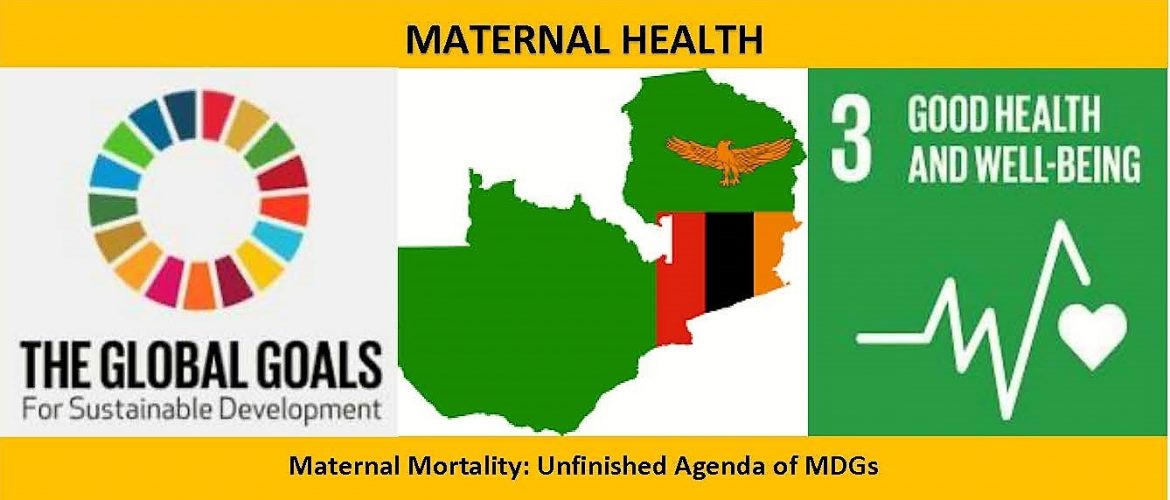Zambia: Maternal Mortality and the Resolve to Reduce It!
Originally published on LinkedIn.
My Saturday morning in Lusaka, the capital of Zambia, started with watching a local TV news channel. Dr. Angel Mwiche, Assistant Director – RMNCH, Ministry of Health (MOH), Dr. Bellington Vwalika, Professor of Obstetrics and Gynecology at the University of Zambia, and another expert were on a show discussing maternal mortality and the commitment of MOH to reduce it. In the past, I have had the opportunity to work with the Zambian Association of Gynecologists and Obstetricians (ZAGO) and Midwives Association of Zambia (MAZ). I was the Technical Director, Global Health, at American College of Obstetricians and Gynecologists (ACOG) and worked with professional associations of healthcare providers to introduce Uterine Balloon Tamponade as part of the management of postpartum hemorrhage.
The ambitious and impressive “Zambia National Health Strategic Plan 2017-2021” sets a goal to reduce Maternal Mortality Ratio (MMR) from 398/100,000 in 2016 to 100/100,000 by 2021. Sustainable Development Goal 3, “Ensure healthy lives and promote well-being for all at all ages” sets aim at reducing global MMR, “to less than 70 per 100 000 births, with no country having a maternal mortality rate of more than twice the global average.”
According to WHO’s factsheet on maternal mortality, 99% of all maternal deaths occur in developing countries. It is important to note that over the past two decades MMR in the United States has doubled making the US the only developed country with increasing MMR.
In a Feb 15, 2019 news article, the Permanent Secretary, MOH, Zambia, highlighted monitoring of maternal deaths to ascertain the causes and help reduce deaths.
Most common causes include postpartum bleeding, sepsis, pre-eclampsia and eclampsia, complications from delivery and unsafe abortion. Factors like poverty, geographic challenges, lack of information, unavailability of services and/or poor quality of service, and socio-cultural stigma, beliefs, and practices are some of the barriers to getting quality care.
The approach to understanding the causes of maternal death and focusing on addressing them has existed since 2004. The Maternal Death Surveillance and Response (MDSR) was launched in 2012 to include surveillance with timely notification followed by action and response. WHO released a report on the global implementation in 2016 – “Time to respond: a report on the global implementation of maternal death surveillance and response.”
There is a consensus in the global health community on the usefulness of the MDSR in reducing maternal deaths, yet its potential remains to be fully utilized. Maternal deaths happening in the facilities and at home need to be covered for the MDSR to be effective. Most countries are implementing policies to conduct the MDSR when death happens at the facility while community-based death audits are rarely done. The USAID’s report, “Acting on the Call Report 2018,” focuses on the journey to self-reliance for preventing child and maternal deaths. The guidelines and resources to conduct the MDSR are available from many leading organizations, for example, FIGO’s “Maternal death surveillance and response: technical guidance. Information for action to prevent maternal death.”
The quality of conducting the MDSR is directly related to its usefulness in preventing deaths. A non-punitive approach – no blame no shame – is central. Out of real or perceived fear of punishment, facility-level contributory factors are often deflected to causes external to the facilities. The capacity of providers to document quality information around the cause of death; capacity of the MDSR committees to conduct the process, connect cause to causative factors, link causative factors to make the recommendations, and craft the recommendations that are specific, measurable, achievable, relevant, and time-bound; and the political will and resources to implement the recommendation are some of the crucial factors to make MDSR work.
URC has used a quality improvement approach to increase the effectiveness of MDSR in many countries.













No comments yet.